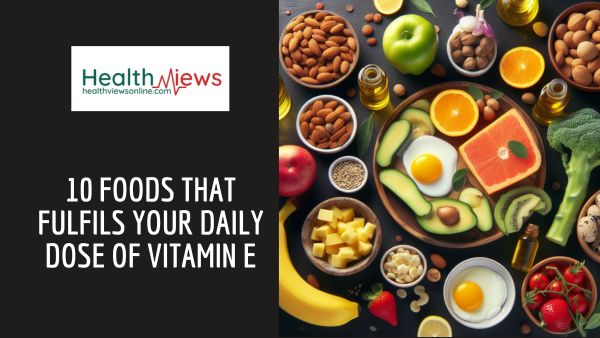Vitamin E is a fat-soluble substance that has antioxidant characteristics and a variety of potential health advantages. Vitamin E-rich foods include sunflower seeds, almonds, peanuts, and others. Because vitamin E is found in many foods, many people acquire enough of it naturally via their diet.
Vitamin E must be obtained from natural dietary sources because the human body is unable to generate it. However, some individuals like taking Vitamin E tablets. Adults should consume 15 mg of vitamin E per day. (Source)
Also, Read : Health Benefits of Beetroot: Nutritional Value, Uses and Health Facts
Learn which foods are high in vitamin E and fulfill your daily dose of Vitamin E
1. Sunflower seeds
Sunflower seeds are a delicious snack. They can also be sprinkled on yogurt, muesli, or salad. A 1 ounce serving of sunflower seeds contains 7.4mg of vitamin E (234% DV). Sunflower seeds are high in several minerals and can help people receive enough fiber to maintain a healthy digestive system. Source
2. Almonds
Almonds contain 25.63 mg of vitamin E per 100 g. People can eat roasted almonds as a snack, mix them into cereal and baked products, or drink almond milk. Almonds are also high in protein, fiber, potassium, and magnesium. Source
3. Peanuts
Peanuts are a well-known snack. A 100 g serving of dry-roasted peanuts contains 4.93 milligrams or 55.5 % RDA of vitamin E. People should choose plain, dry-roasted peanuts over ones with added salt and flavorings. Source
4. Oils
Some oils are highly high in vitamin E, however aside from fat and calories, most have relatively little nourishment. Source
A tablespoon of the oils listed below contains:
- Wheat germ oil: 20.32 mg of vitamin E (Source)
- Rice bran oil: 4.39 mg vitamin E (Source)
- Grape seed oil boasts a high vitamin E content, varying from 1 to 53 mg per 100 g of oil, and 148–358 α-tocopherol equivalents, surpassing levels found in soybean and olive oils. The quantity of vitamin E in grape seed oil is influenced by both the grape variety and environmental cultivation conditions. (Source)
- Safflower oil: 4.64 mg of vitamin E (Source)
Also, Watch health views web stories: 8 Foods That Fulfill Your Vitamin A Dose
5. Avocados
Avocados are a multipurpose fruit that is high in nutrients and low in sugar. Avocado has 2.07 milligrams of vitamin E per 100 g. The same serving size also contains 10 mg of vitamin C, making it a nutritious accompaniment to many meals and snacks. Avocados have more potassium than bananas. Source
6. Spinach
Raw spinach has 2.03 mg of vitamin E per 100g. Spinach is a healthy leafy green food that can help your skin, hair, and bones. It is high in a variety of vitamins and minerals. Source
7. Swiss chard
Swiss chard is a dark green leafy vegetable with 1.89 mg of vitamin E per 100 g. Swiss chard is a high-nutritional-value vegetable. It’s high in vitamin K and may help people maintain healthy blood sugar levels and heart health. Source
8. Butternut squash
Butternut squash is a delightful vegetable that can be used in a variety of fall and winter meals. 100 g of cooked butternut squash has 1.29 mg of vitamin E. Butternut squash is one of the most prevalent winter squash cultivars. It also contains a lot of vitamin A, potassium, and fiber.
9. Beet greens
While many people are familiar with the flavor of beetroot, not everyone is aware that the “greens” or leaves may be eaten. Beetroot leaves can be sautéed in oil or used in salads. 1.81 mg of vitamin E is found in 100 g of cooked beetroot greens. Source
Also, Read Quinoa Health Benefits: Advantages & Precautions
10. Trout
Trout provides 2.15 mg of vitamin E per 100 g intake. Trout is also abundant in omega-3 fatty acids, and a dish of the same size contains 21.11 g of protein. Source
Vitamin E is an effective antioxidant that can help in the protection of cells from free radical damage. Getting enough vitamin E may also help lower the risk of a variety of illnesses such as cancer, cardiovascular disease, and cognitive decline. However, research does not back up the use of vitamin E supplementation to lower the risk of chronic disease. The best source of vitamin E is food.
Many foods contain vitamin E, but nuts, seeds, and some oils have the largest concentrations. If you are concerned about your vitamin E levels, talk to your doctor or a dietician about boosting your intake.
Also, Watch health views web stories: 8 Foods That Fulfill Your Vitamin E Dose





